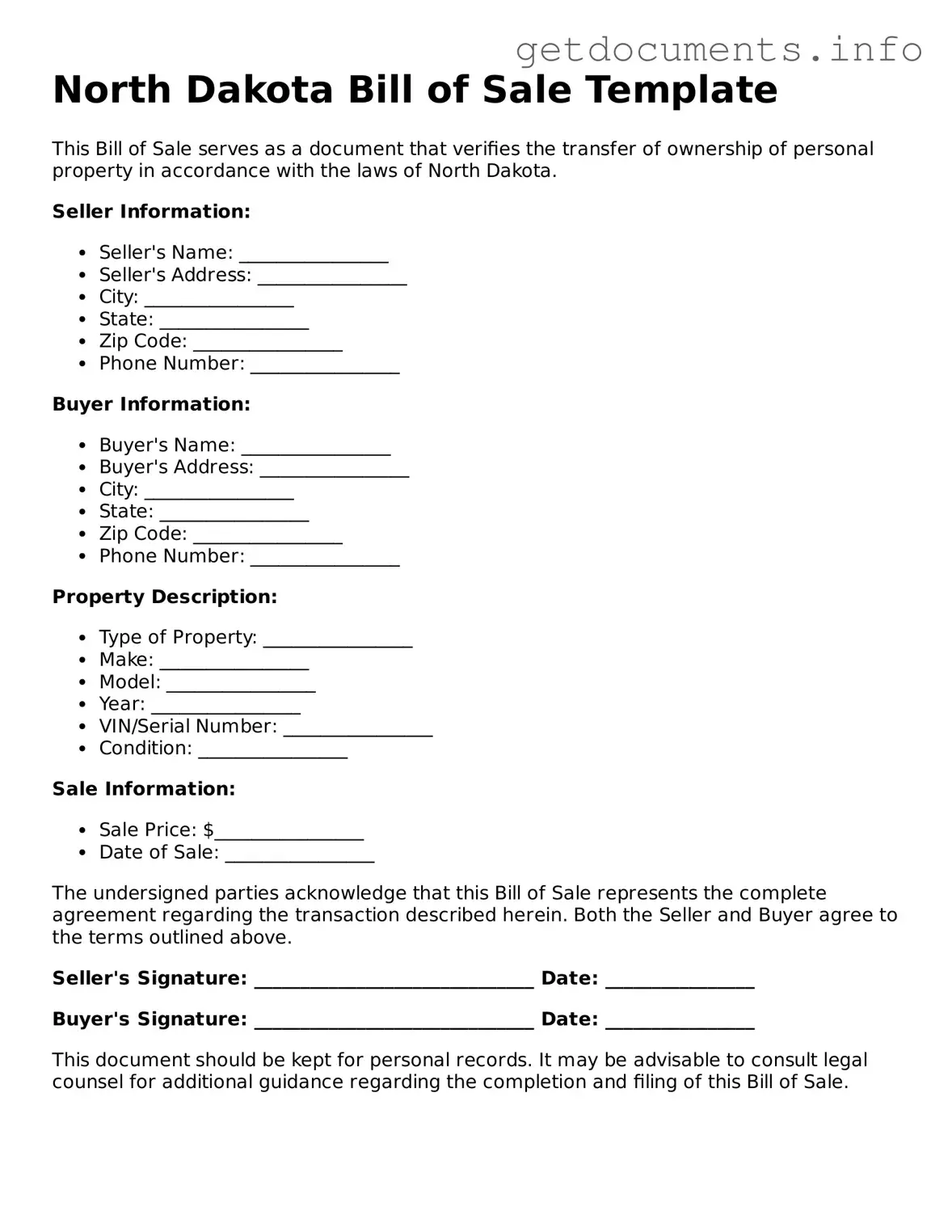Free Bill of Sale Template for North Dakota
A North Dakota Bill of Sale form is a legal document that records the transfer of ownership of personal property from one party to another. This form serves as proof of the transaction and includes essential details such as the buyer's and seller's information, a description of the item, and the sale price. To ensure a smooth transfer process, consider filling out the form by clicking the button below.
Access Bill of Sale Editor
